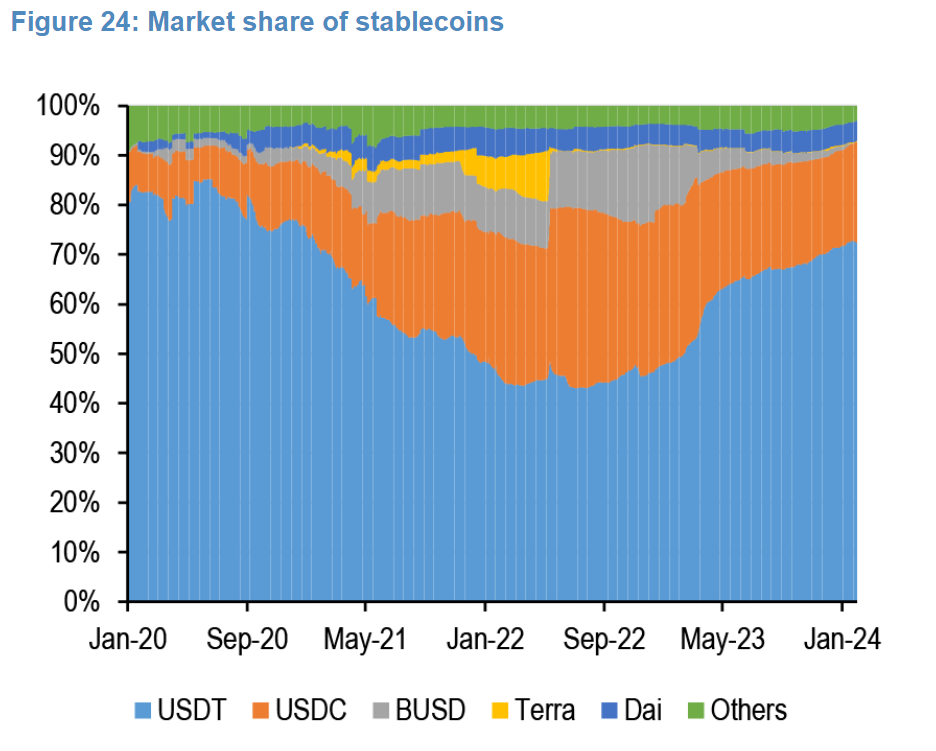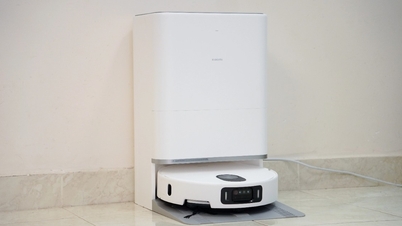According to Bloomberg, stablecoins are cryptocurrency tokens that are pegged to another asset, using large reserves to maintain a stable value. They are a solution for investors who want to exchange and store digital assets without worrying too much about price fluctuations. A new report from JPMorgan shows that USDT has become the leading stablecoin in the past two years thanks to its growing market share, however, the company Tether does not fully comply with regulations and operates without transparency.

USDT is dominating the stablecoin market
Tether CEO Paolo Ardoino said that Tether's market dominance may be a negative for competitors, including those in the banking industry who want to achieve similar success, but it does not harm the markets that truly need USDT. He emphasized that Tether always works closely with regulators around the world to help them understand stablecoin technology and guide them on how to approach it appropriately.
However, stablecoins are in the crosshairs of authorities in the US and Europe. The Clarity for Payment Stablecoins Act is awaiting a vote in the US House of Representatives. Meanwhile, the Markets in Digital Assets Act (MiCA) will come into effect in June 2024 in Europe, marking a change in the way the European Union (EU) monitors and regulates the cryptocurrency market.
Several other stablecoin issuers may benefit and gain market share as new stablecoin regulations are implemented.
Since paying a $41 million fine to the U.S. Commodity Futures Trading Commission (CFTC) in 2021 for lying about its reserves, Tether has been working to make its operations and finances more transparent. But competitor Circle, the company behind the stablecoin USDC, remains more compliant than Tether.
According to data from CoinMarketCap, USDT is the most traded cryptocurrency, behind only Bitcoin and Ethereum in terms of market capitalization. USDC is the seventh largest digital token, with a market capitalization of about $27 billion.
Source link


![[Photo] Prime Minister Pham Minh Chinh inspects and directs the work of overcoming the consequences of floods after the storm in Thai Nguyen](https://vphoto.vietnam.vn/thumb/1200x675/vietnam/resource/IMAGE/2025/10/08/1759930075451_dsc-9441-jpg.webp)

![[Photo] Prime Minister Pham Minh Chinh attends the World Congress of the International Federation of Freight Forwarders and Transport Associations - FIATA](https://vphoto.vietnam.vn/thumb/1200x675/vietnam/resource/IMAGE/2025/10/08/1759936077106_dsc-0434-jpg.webp)





























































































Comment (0)